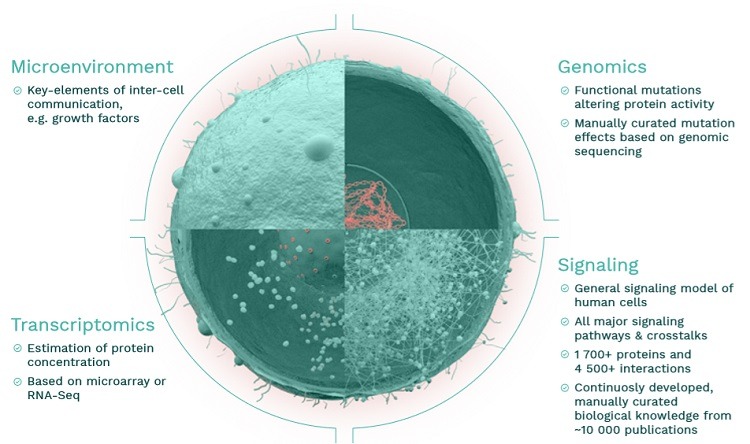Hoteliers in Hungary must be loving life right about now. In 2018, Hungary set a record of 31 million hotel nights booked by tourists.
copyright by www.nanalyze.com
 From obnoxious British stag do goers to snap-happy Chinese mainlanders, the streets of Budapest – that’s Hungary’s capital city for the geographically challenged – are chock full of people enjoying the “Paris of the East.” It’s a city built on a vast network of underground caves and springs which means there’s plenty of sauna action to be found, not just for the sort of lads who cruise Soho’s Sweatbox on weekday nights. We recently airdropped one of our MBAs into the city center to bathe in its healing waters and speak with a startup that’s trying to heal people using artificial intelligence.
From obnoxious British stag do goers to snap-happy Chinese mainlanders, the streets of Budapest – that’s Hungary’s capital city for the geographically challenged – are chock full of people enjoying the “Paris of the East.” It’s a city built on a vast network of underground caves and springs which means there’s plenty of sauna action to be found, not just for the sort of lads who cruise Soho’s Sweatbox on weekday nights. We recently airdropped one of our MBAs into the city center to bathe in its healing waters and speak with a startup that’s trying to heal people using artificial intelligence.
Turbine – Simulating Cancer Cells Using AI
Founded in 2015, Budapest startup Turbine has taken in an undisclosed amount of funding to develop a platform that uses artificial intelligence to better understand cancer tumors. As we’ve talked about in past articles, there is no single “ cure for cancer ” given that there over 100 types of cancer and each case is unique. What all types of cancer share in common is the aggressive replication of cells that form the tumors which surgeons then try to remove.
What Turbine does is to use tumor-specific DNA and RNA data to then create “Simulated Cells” which are simulations that mimic the behavior of actual cancer cells. A look at their white paper shows an incredibly complex technology that’s difficult to grasp without having any medical background. Fortunately, we have MBAs on staff – people who excel at getting other people to do all the work and taking credit for it. One of our MBAs sat down with Co-founder and Chief Technology Officer at Turbine, Kristóf Szalay, to try and better understand the technology platform he’s been working on for nearly a decade.
Building Digital Cells
A few years back, we published an article on 9 Computational Drug Discovery Startups Using AI in which we attempted to explain the drug discovery process in the simplest of ways as follows:
- Find a new protein in body to hit with molecule
- Find molecule(s) that binds to protein in body
- Once you find a hit, then turn it into something that can be introduced to a living being
That’s the end goal. In a subsequent article, we looked at How Computational Chemistry Helps Drug Discovery by using computer simulations to assist in solving chemical problems. That’s what Turbine is doing, and the first step in their process is to create simulated cells – digital recreations of living things.[…]
read more – copyright by www.nanalyze.com


Hoteliers in Hungary must be loving life right about now. In 2018, Hungary set a record of 31 million hotel nights booked by tourists.
copyright by www.nanalyze.com
Turbine – Simulating Cancer Cells Using AI
Founded in 2015, Budapest startup Turbine has taken in an undisclosed amount of funding to develop a platform that uses artificial intelligence to better understand cancer tumors. As we’ve talked about in past articles, there is no single “ cure for cancer ” given that there over 100 types of cancer and each case is unique. What all types of cancer share in common is the aggressive replication of cells that form the tumors which surgeons then try to remove.
What Turbine does is to use tumor-specific DNA and RNA data to then create “Simulated Cells” which are simulations that mimic the behavior of actual cancer cells. A look at their white paper shows an incredibly complex technology that’s difficult to grasp without having any medical background. Fortunately, we have MBAs on staff – people who excel at getting other people to do all the work and taking credit for it. One of our MBAs sat down with Co-founder and Chief Technology Officer at Turbine, Kristóf Szalay, to try and better understand the technology platform he’s been working on for nearly a decade.
Building Digital Cells
A few years back, we published an article on 9 Computational Drug Discovery Startups Using AI in which we attempted to explain the drug discovery process in the simplest of ways as follows:
That’s the end goal. In a subsequent article, we looked at How Computational Chemistry Helps Drug Discovery by using computer simulations to assist in solving chemical problems. That’s what Turbine is doing, and the first step in their process is to create simulated cells – digital recreations of living things.[…]
read more – copyright by www.nanalyze.com
Share this: